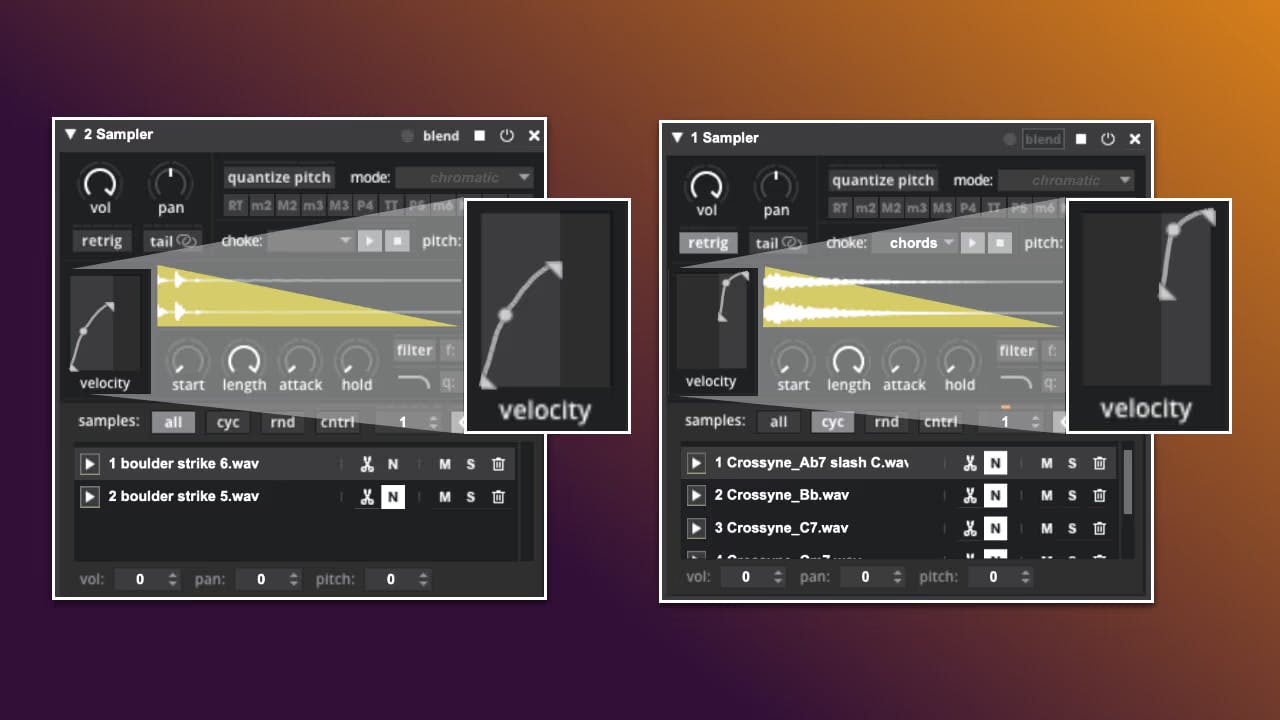
What is Velocity Thresholding?
You probably already know that Sensory Percussion can turn your drum into a melodic device that cycles through chord progressions. But did you know that it can also allow one drum to play a chord only when you hit it hard enough and play a completely different sound when you play softly? This technique is called velocity thresholding. It can be found in lots of different Sunhouse kits, and it allows you finer control over the harmonic rhythm of your progression based on how hard you play.
So what does this term mean exactly? Velocity refers to how hard you hit the drum, and it's expressed on a scale from 0-100 inside Sensory Percussion. Threshold refers to a maximum/minimum level that you can set for any given sound or group of sounds. Depending on how you set it up, you can make the sound happen only above or only below this chosen threshold. Here's a video with examples of velocity-thresholded chord progressions from four different Sunhouse kits, all available as free downloads to Sensory Percussion users. If you watch the rack tom, you'll notice that loud strikes result in chords, while softer strikes produce non-melodic percussive sounds:
In this video, we used the Sensory Percussion Ableton plugin to capture a performance and then run it through multiple different kits. Head to our downloads page to get these kits for yourself!
How To Create A Velocity-Thresholded Chord Progression
Every Sensory Percussion sampler comes with the ability to create velocity threshold. All you have to do is create a sampler, drag in whatever chords you want to use, then in the velocity in/out panel on the left side of the sampler, drag the bottom dot up and to the right. The farther right you drag it, the higher threshold, meaning it will filter out all hits below that velocity.
In this panel, the x-axis is velocity in and the y-axis is velocity out. By default, it's a straight line from the bottom-left to the top-right corner, meaning if you hit the drum at velocity of 20, it will sound at a velocity of 20, and so on. In the clip above, you can see that the bottom-left dot has been dragged until it reads "lo-in:62" (on a scale of 0-100). This means that any hit below a velocity of 62 will not trigger the sampler, and any hit with a velocity of 62 or above will.
Ok, so we have our chords sounding when we hit the drum hard, but how do we set up the percussive sounds for soft hits? For this, there are two options: you can create another sampler and leave the velocity in/out in its default state. This would mean that a velocity below 62 would trigger only the percussive sounds and a hit above 62 will trigger both the percussive sound and the chords. The second option, if you want only percussive sounds below 62 and only chords above 62, is to do essentially the opposite process of what we did for the chords:
Here, you can see we dragged the top-right dot down and to the left until it reads "hi-in:62". This means we've set the threshold to filter out all hits with a velocity above 62. For more info on this subject, check out the velocity input/output panel section of the Sunhouse user manual.
::: info Pro Tip: While dragging the velocity in/out threshold left or right, hold down the shift key to snap to even intervals of 10. This makes creating thresholds above/below a given number even easier! :::
And that's it! You now have one drum that can play two different groups of sounds depending on how hard you hit it using velocity thresholding! Download one of the many Sunhouse kits that use this technique, or start from scratch and create your own brand new setup. Either way, this technique is a great way to get the most expressivity possible out of a single drum. Happy drumming!
